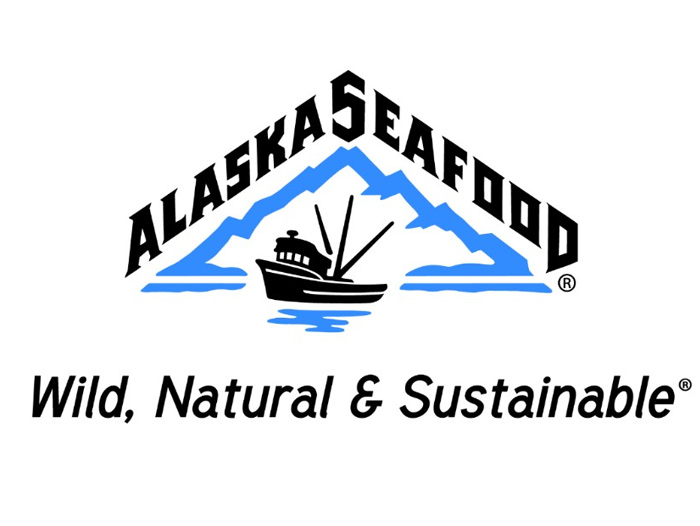Wild Alaska Halibut and Sablefish Harvest Seasons Kickoff March 15
March 15, 2019 | 5 min to read

JUNEAU, Alaska — Supplying more than 90 percent of the Pacific halibut and 68 percent of the sablefish harvested in the United States, wild Alaska halibut and sablefish (black cod) harvest seasons open on Friday, March 15, just in time for spring. The two species join in-season Alaska pollock, cod, rockfish and sole to round out Alaska’s wide variety of whitefish. Domestically sourced from glacier-fed waters, the unparalleled flavor and exceptional quality of wild, sustainable Alaska whitefish species make them a must-have ingredient for home cooks, foodies and chefs alike.
Alaska halibut offers a delicate, sweet flavor that lends itself well to an array of cooking methods while the rich, velvety texture of Alaska sablefish makes it a luxurious and equally versatile fish. Both varieties are heart-friendly protein options, making for the perfect complement to lighter spring fare. The start of the new season is a timely reminder to ‘Ask for Alaska’ when dining out or shopping at grocery stores to ensure wild, sustainably sourced seafood.
“Each new harvest season is an opportunity to inspire customers to fall in love with Alaska’s wide variety of whitefish offerings, each with its own flavor profile, and always wild and sustainably sourced,” said Jeremy Woodrow, communications director, Alaska Seafood Marketing Institute (ASMI).
With sustainability written into the state constitution, Alaska adheres to strict science-based fisheries management to ensure healthy seafood stocks for generations to come. The 2019 Alaska Total Allowable Catch for halibut is 18.9 million pounds, and 46.4 million pounds for sablefish.
A wide range of whitefish species, all in season now, offer an option for every taste, budget and culinary adventure. Each species is harvested seasonally and is also available frozen year-round. Find additional details and recipe inspiration below.
Alaska Whitefish Varieties
- Alaska halibut: Sweet, with delicate flavor and a firm and flaky texture, halibut maintains its shape and is suitable for all types of cooking methods. Recipe suggestions: Seared Alaska Halibut Pasta with Pistachio Pesto or Miso Alaska Halibut with Soba Noodle Stir-Fry
- Alaska sablefish (black cod): With a velvety texture and rich flavor, sablefish is perfect for grilling, poaching, smoking or roasting. Recipe suggestion: Spicy Alaska Sablefish in Lettuce Cups or Thyme-Crusted Alaska Sablefish
- Alaska cod (Pacific cod): Moist and firm with a distinctive large flake and slightly sweet flavor, cod adapts well to most cooking methods. Recipe suggestion: Alaska Cod Parmesan with Zucchini Noodles
- Alaska pollock: With its mild flavor, Alaska pollock is an excellent choice for fish tacos, fish sticks and fish burgers and can be sourced frozen as fillets or lightly breaded. Recipe suggestion: Wild Alaska Pollock Tacos
- Alaska sole (flounder): Lean, tender and with a mild taste, sole requires minimal handling to preserve moisture and is best when poached, sautéed or steamed. Recipe suggestion: Alaska Sole Sliders
- Alaska rockfish: With a tender, yet meaty, texture, rockfish is great with a wide range of rubs, marinades and sauces. Recipe suggestion: Blackened Alaska Rockfish with Avocado-Corn Salsa
ASMI’s “How to Fillet a Wild Alaska Halibut” video and the Alaska Whitefish Buyer’s Guide are additional resources available for consumers looking to learn more about Alaska’s wild whitefish varieties.
For the latest updates and more culinary inspiration, follow Alaska Seafood on Facebook, Twitter, Instagram and Pinterest.
About Alaska Seafood:
The Alaska Seafood Marketing Institute (ASMI) is a partnership of the State of Alaska and the Alaska seafood industry promoting the benefits of wild and sustainable Alaska seafood and offering seafood industry education. The seafood industry is Alaska’s largest private sector employer with nearly 60 percent of all seafood and 90-95 percent of wild salmon harvested in the U.S. coming from Alaska. Alaska is known for its wild salmon, crab and whitefish varieties, such as cod, sablefish, halibut, pollock, sole and rockfish, and is available frozen, canned, smoked and fresh year-round. Alaskahas been dedicated to sustainable seafood for more than 50 years and is the only state with a constitution that mandates all seafood be maintained under the sustained yield principle. Alaska has taken a leadership role in setting the standard for precautionary resource management to protect fisheries and surrounding habitats for future generations and leading to an ever-replenishing supply of wild seafood for markets worldwide.
